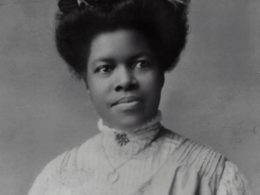In today’s world, diversity and inclusion have become buzzwords in the corporate world. Companies are increasingly recognizing the importance of having a diverse workforce that reflects the society they operate in. However, despite the best intentions, unconscious bias can creep into the hiring process, leading to a lack of diversity in the workplace. In this article, we will explore some strategies for promoting diversity and inclusion in hiring processes.
Understanding Unconscious Bias
Unconscious bias refers to the attitudes and stereotypes that we hold about certain groups of people, which can influence our decision-making processes. These biases are often deeply ingrained and can be difficult to recognize. In the context of hiring, unconscious bias can lead to the selection of candidates who fit a certain mold, rather than those who are the best fit for the job.
Strategies for Promoting Diversity and Inclusion in Hiring Processes
1. Define the Job Requirements Clearly
One of the most effective ways to promote diversity and inclusion in hiring processes is to define the job requirements clearly. This means identifying the skills, experience, and qualifications that are essential for the job, rather than focusing on factors such as age, gender, or ethnicity. By doing so, you can ensure that all candidates are evaluated based on their ability to perform the job, rather than their background.
2. Use Blind Hiring Techniques
Blind hiring techniques involve removing identifying information from resumes and applications, such as the candidate’s name, age, and gender. This can help to eliminate unconscious bias and ensure that candidates are evaluated solely on their qualifications and experience. Additionally, using standardized interview questions and evaluation criteria can help to ensure that all candidates are evaluated fairly.
3. Diversify Your Recruitment Channels
Another effective strategy for promoting diversity and inclusion in hiring processes is to diversify your recruitment channels. This means reaching out to a wider range of candidates, including those from underrepresented groups. For example, you could partner with organizations that support diversity and inclusion, or attend job fairs that cater to specific communities.
4. Train Hiring Managers on Unconscious Bias
Training hiring managers on unconscious bias can help to raise awareness of the issue and provide them with the tools they need to recognize and overcome their biases. This can include providing them with resources and training on how to conduct fair and unbiased interviews, as well as how to evaluate candidates based on their qualifications and experience.
5. Monitor and Evaluate Your Hiring Processes
Finally, it’s important to monitor and evaluate your hiring processes regularly to ensure that they are promoting diversity and inclusion. This can involve tracking metrics such as the diversity of your candidate pool, the number of candidates from underrepresented groups who are hired, and the retention rates of these employees. By doing so, you can identify areas for improvement and make changes to your hiring processes as needed.
Conclusion
Promoting diversity and inclusion in hiring processes is essential for creating a more equitable and inclusive workplace. By understanding unconscious bias and implementing strategies such as defining job requirements clearly, using blind hiring techniques, diversifying recruitment channels, training hiring managers on unconscious bias, and monitoring and evaluating your hiring processes, you can ensure that all candidates are evaluated fairly and that your workforce reflects the diversity of the society you operate in.












